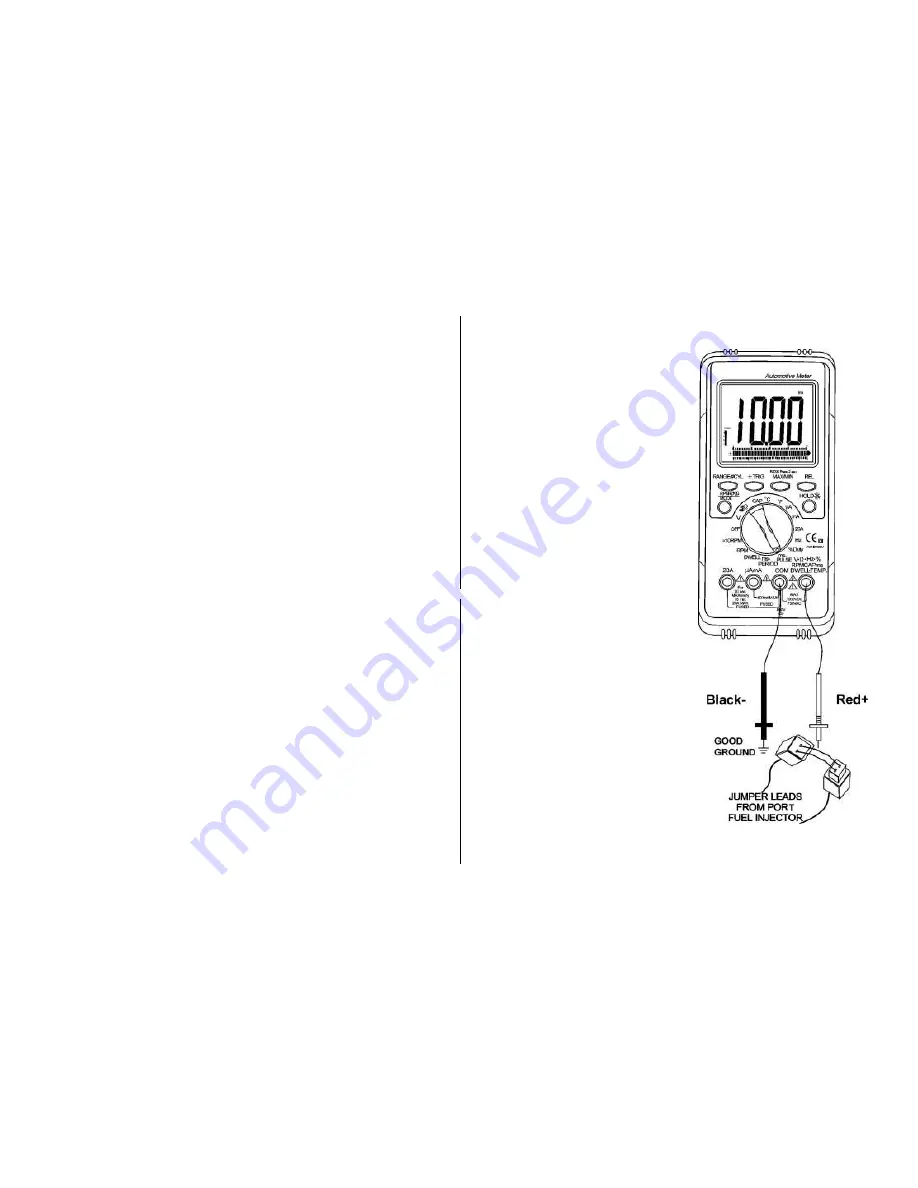
23 24
Meter Functions- ms-PULSE (Pulse Width) &
ms- PERIOD (Period)
Pulse Width is the length of time an actuator is energized. For
example, fuel injectors are activated by an electronic pulse from
the Engine Control Module (ECM).
This pulse generates a magnetic field that pulls the injectors nozzle
valve open.
The pulse ends and the injector nozzle is closed.
This open to close time is the Pulse Width and is measured in
milliseconds( ms).
The most common automotive application for measuring pulse
width is on fuel injectors.
You can also measure the pulse width of the fuel mixture control
solenoid and the idle air control motor.
This exercise shows how to measure Pulse Width on Port Fuel
injectors.
To measure pulse width (mS):
Select the mS-Pulse function
with the rotary switch .
Press the
±
TRIG button for
2 seconds until the negative
(-) trigger slope is displayed
on the lower left side of the
display.
NOTE : The applied time for
most fuel injectors is
displayed
on
the
negative (-) slope.
Insert:
Black lead in
COM
jack.
Red lead in
RPM-V-
Ω
jack.
Connect:
Jumper wires between the fuel
injector
and
the
harness
connector.
Black test probe to a good
ground at the fuel injector or the
negative (-) vehicle battery post.
Red test probe to the fuel
injector solenoid driver input on
the jumper cable.
Start the engine. A pulse width in
milliseconds should be read.
If reading is too high or
unstable,,adjust the trigger level
by pressing the
±
TRIG button
for improved reading.




















